How Trolling Motors Are Changing Tarpon Fishing
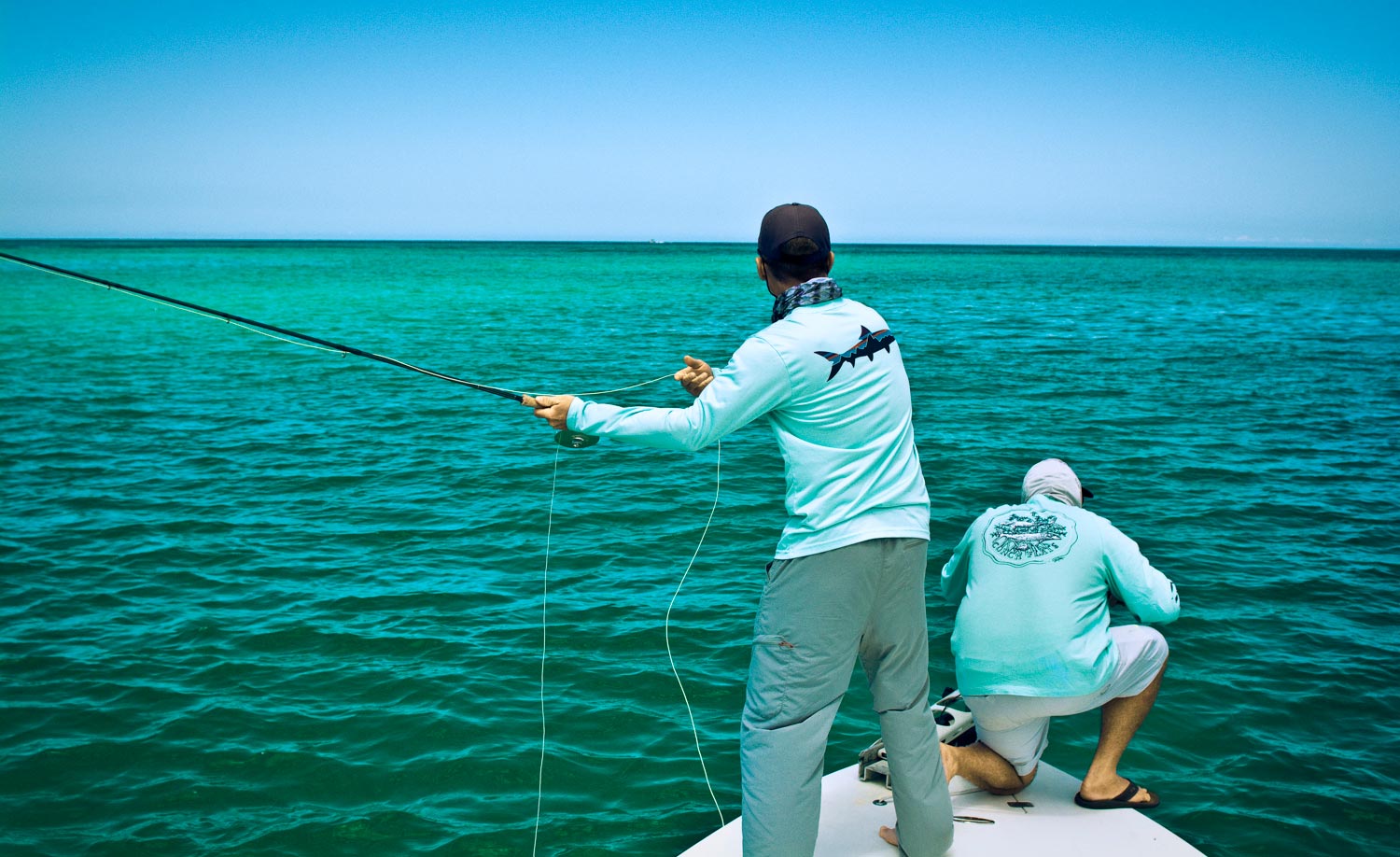
MY FIRST DAY OF FISHING TARPON WITH A TROLLING MOTOR WASN’T WHAT I’D EXPECTED.
I’ve been involved in several conversations on this topic in the past year. There are strong opinions on both sides but the fact is that each year there are more guides pursuing tarpon with trolling motors and it is definitely changing the game.
I do most of my tarpon fishing in the Keys. I like the fishing in the Keys for the same reason I like the Keys in general. Things are just a little slow to change down there. The Keys remind me of the Florida of my childhood, before theme parks and resorts, when Florida was ringed by sleepy beach towns and single-story motels.
While fishing the Keys today is far from the same experience it used to be, it’s still the kind of place where you can get lost in time. What I mean by that is that it’s the kind of place where, on a good day, you can pole a bank in quiet isolation and focus on the water and the fish. There are plenty of boats and anglers but there is still some etiquette among anglers. That’s disappeared in much of Florida.
It’s disappearing in the Keys too and if you spend any time at all drinking a beer with the flats guides down there, you hear about it. More and more you hear about trolling motors. Every year, new guides show up with electric motors mounted on their boats and every year more of the established guides give in and buy trolling motors of their own. I have heard a lot of talk about how it’s changing tarpon fishing but I never saw it until recently.
I fished Boca Grande for the first time recently. It was a very different experience than what I’m used to. I don’t want you to think I’m bashing the fishery or the guides there. It’s a beautiful place with tons of fish and great water. It’s just a very different culture than I’m used to, and it has to be. The pressure there is so intense that there’s no choice other than to throw the Keys-style etiquette out the window. If you don’t want to fish a flat with three other boats, it’s not the place for you. Guides there have been using trolling motors for some time now and it was a great chance for me to see what that really means.
How is fishing tarpon with a trolling motor different?
The trolling motor is really changing the way anglers target migrating fish. It used to be that when you were targeting schools of fish moving along the beach you would get in position and get a couple of shots at the school as they passed. Your guide would try to keep you on them as long as possible, but it’s hard to chase fish with a push pole. You got a couple of shots and you had to make them count.
It’s a very different game with the trolling motor. A guide with a motor can
Read More »For Steelhead, The Swing Is The Thing…Or Is It?
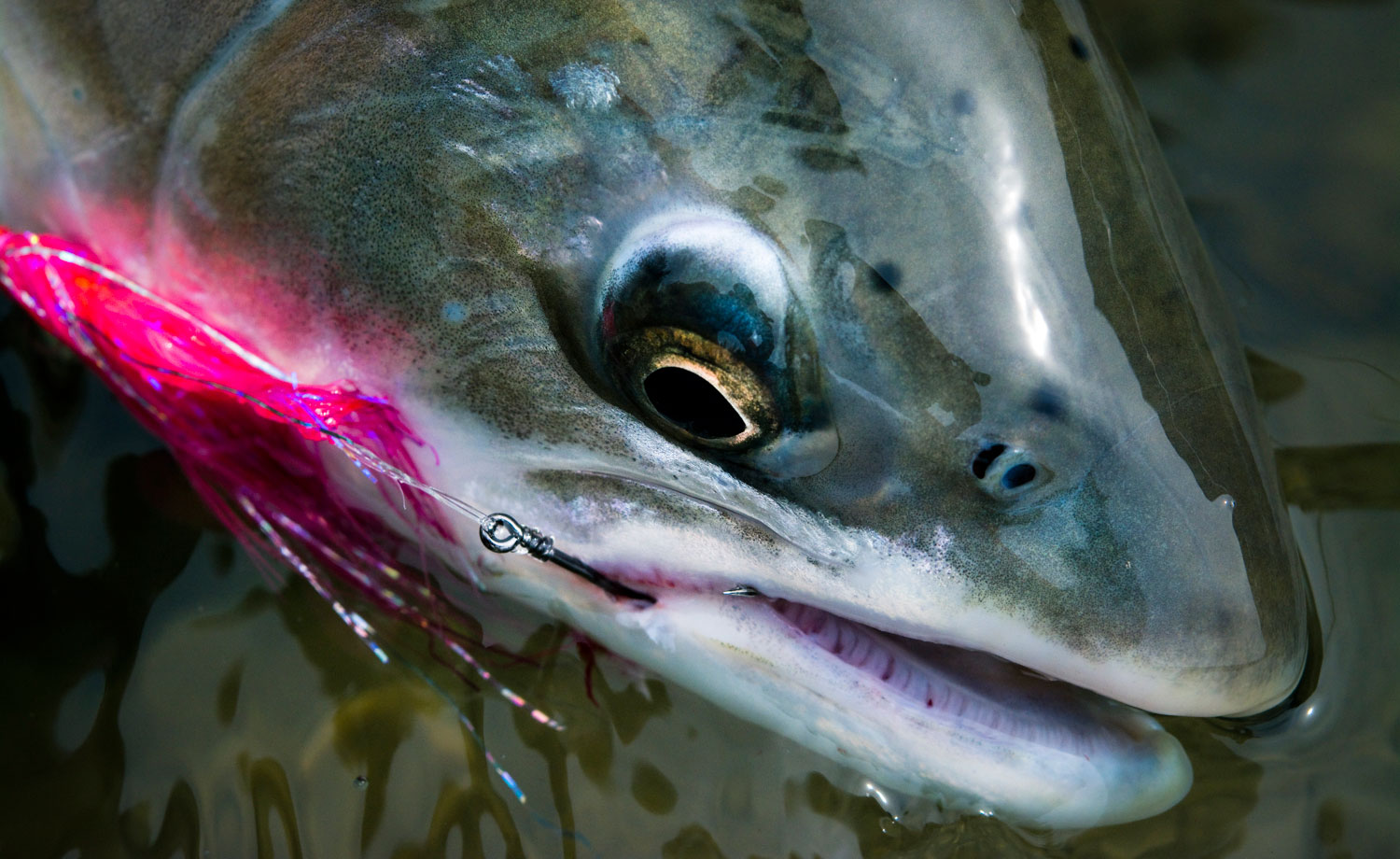
WHEN SWINGING FLIES FOR STEELHEAD, HOW IMPORTANT IS MANAGING THAT SWING?
It seems like a simple question. I know how I feel about it, but when you start talking to folks about it you get surprisingly different opinions. I’ve been told it doesn’t matter and I’ve been told it’s all that matters. I’ve heard it matters on some rivers and not on others. So where does the truth lie?
I was talking with a friend the other day when he asked me why I was catching more fish that week than he was. That’s, kind of, an impossible question to answer, especially where steelhead are concerned. It could be the magic fly or the right sink tip. It could be a ‘right place, right time’ situation. I have a friend who thinks it’s karma and it could well be dumb luck or what my grandfather called, “holding your mouth right.”
After some discussion, my friend Kevin was convinced the difference is in how I manage my swing. I learned how to swing flies from some pretty damned good anglers and I like to think I do a good job of it. My technique is also informed by some basic things I believe about fish and fishing. I do think it’s important and there are other things about catching steelhead that I think are equally important.
For what it’s worth, here’s how I manage my swing.
First of all, a good cast is a real asset. Turning your leader over, casting distance and accuracy are all important skills. That said, you
Read More »Die With a Human Heart by Jon Tobey

Today, we are pleased and honored to bring you an amazing work of fly fishing fiction by Jon Tobey of Gointothelight. Jon is an accomplished writer and his story “The Very Cruelest Thing” was a huge hit as a Saturday Shoutout. We knew you wanted more.
Die With a Human Heart
I
Nathaniel hated re-entry. It was the same endless elevator free-fall feeling he had when they pulled him off the bottom. It was the last thing he remembered before he died, lungs crushed to the size of fists. He longed for the clean pure air of a high meadow won after a long hike. The trees lit up with alpenglow as soft and bright as an artist’s brush. The patient, patient trout waiting through the decades to rise to a well-presented fly. For one moment to be bound together – these living things in a bouyant dance, and to hold one in his hand as hydraulically perfect and functionally timeless as the monstrosity in his chest.
The red rocket came down fins first, lowering itself on a pillar of flame. It was the most stupendous thing Izaak had ever seen. Rockets left every day, but only a few came back every year. He held his mother’s hand and looked out the window. “Grandfather is here!” Mother looked down at him and smiled her worried smile. It seemed the rocket had barely hit the ground when a ramp opened and a group of rough-looking men tumbled down the ramp. A few went off alone or with other men, but most looked around expectantly. Izaak let go of his mother’s hand and raced out the door. “Be careful, no running!”
Nathaniel recognized his grandson from the ever-rarer vid chats, but was flummoxed when the boy ran up and threw himself at him, not having touched another human in what, thirty years? When he saw Clare across the apron, shimmering in the heat, a vision of her mother, he wrapped his arms around the boy and lifted him off the ground, dropping his bag.
“You look so much like your mother,” he said when she walked up.
“Space will do that to you,” she replied. They looked at each other and he smiled. He knew what it was like to be bursting to say the right thing and say the wrong. It conveyed so much more information.
He held out his hand to the man to her left, “Daniel.” Of course he’d “met” him on chat, but this was the first he’d personally met the man who married his girl, the father of his grandchild.
“Nathaniel.” Nathaniel found Daniel’s grip offensively limp. “It’s so good to meet you.”
“Do you want to go fishing? I’ve been practicing, I have just the spot. I know everything: how to pick a fly and tie it on and cast and spot the fish and everything.” Izaak seemed to speak without breathing.
“Aren’t you tired, Nathaniel?” asked Clare. He would have preferred “dad,” or even “father.”
“Hell, no.” His eyes were still on Clare’s. “I’ve been sleeping for three months, and dreaming about fishing the whole time. You coming, Daniel?”
Daniel looked a little lost. “Um, well, not much of a fisherman, and besides,
Bruce Chard’s Double Haul Drill
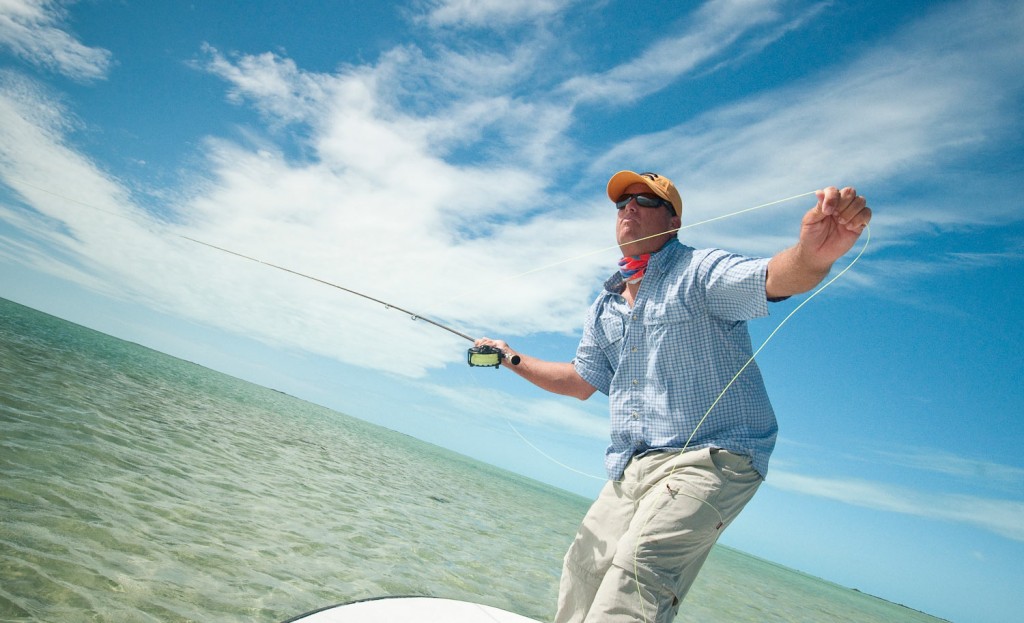
Today begins a special five part video tutorial on building blinding line speed.
Line speed is the most important component in successful salt water fly fishing. There’s plenty of finesse involved but line speed is the cost of admission. If you can’t build the speed you need, you can’t catch the fish you want.
My good friend Bruce Chard is a certified master casting instructor and a truly inspiring caster. The first time, hell the first hundred times, I saw Bruce unload my jaw dropped. It’s humbling to watch what this guy can do with a fly rod. Bruce has a rare blend of skills. The technical know how of an engineer and the physical prowess of an athlete. With that in mind I asked him to help me create a set of videos that can take you from beginner to rock star. We’re calling it the Ultimate Line Speed Series. There’s a lot to cover but we’re starting here with everything you need to know about line speed.
We’re going to start slow, with the double haul. The basic building block of a dynamic cast. By day five we will be into some seriously advanced technique that is going to
Read More »Fly Fishing Bass: Take Advantage of Late-Winter Warming Trends
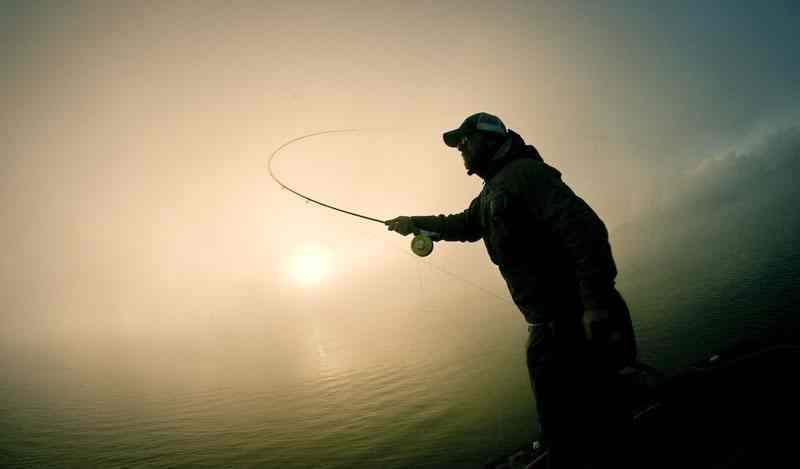
This past month, most of us found ourselves having to deal with insanely cold weather, and in many cases, record snow fall on top of that. It was so cold for such an extended period of time, Lake Superior froze over solid, and that hasn’t happened for decades. Even our cold water trout seemed to especially feel the deep freeze. At least the ones that I visited on my home streams, as I struggled to catch them in-between de-icing my rod guides and fly line every other cast. You could catch some trout, but it was hard going, numbers were down, and the trout sure as heck weren’t moving any more than they had to. It seemed all they truly cared about was just taking in enough food to weather the storm. For all you bass fly junkies out there, there’s no question that you were shit out of luck during the last 30 days or so. That is, of course, unless you had an auger handy and were willing to go ice fishing for bass.
On a positive note, it looks like we’ve probably made it past the worst of the bitter cold weather this season. In fact, things really starting looking up this past week, particularly in the Southeast, where many of us southerners saw consecutive sunny days, that warmed the air well into the 60s. When I saw this, I immediately hit some bass water to take advantage of the strong warming trend, and “Wow” were the bass aggressive. They had really turned on quick with the rapidly warming water temperatures. I landed some really nice bass on the fly, and even better, I did it all while most of my peers were still stuck inside trying to de-thaw. Late-winter warming trends, that provide a couple days or more of above average temperatures, are prime times to chase bass on the fly. I learned this bass fact, as a young kid, where I regularly landed some of my largest winter bass on neighborhood ponds. The key was getting on the water and fly fishing hard during those stretches of sunny and warm weather after long stretches of cold.
Read More »The Clearing Cast And Ready Position
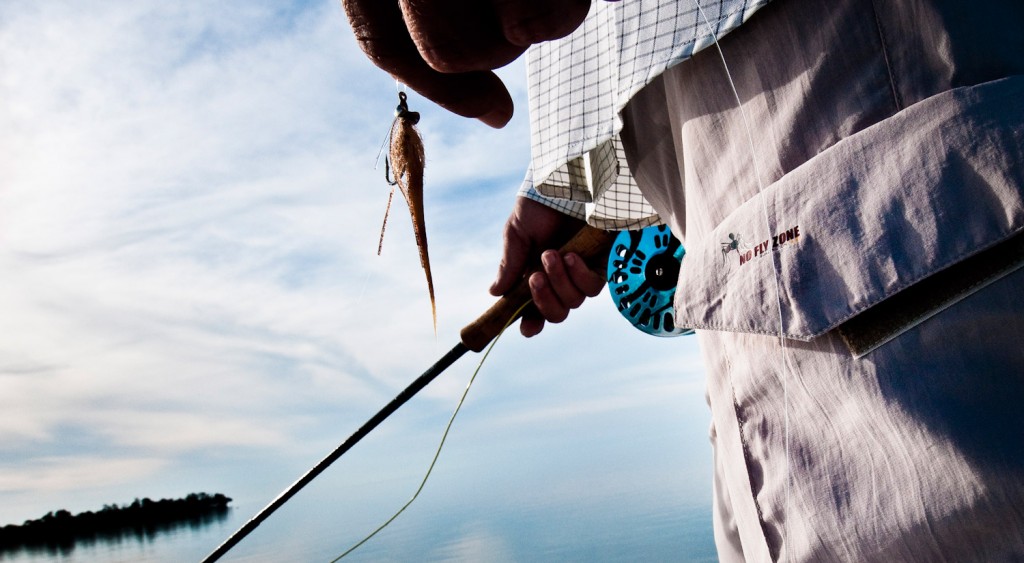
I spent a week in the keys recently, with my good friend Capt Joel Dickey . We made a series of videos to help you out with your salt water presentations. The first is on the clearing cast and the ready position. The next two are on the double haul and building better line speed and will post on Wednesday and Friday. I hope they help put you on some fish!
WATCH THE VIDEO!
Read More »Waiting for the Cicada Hatch
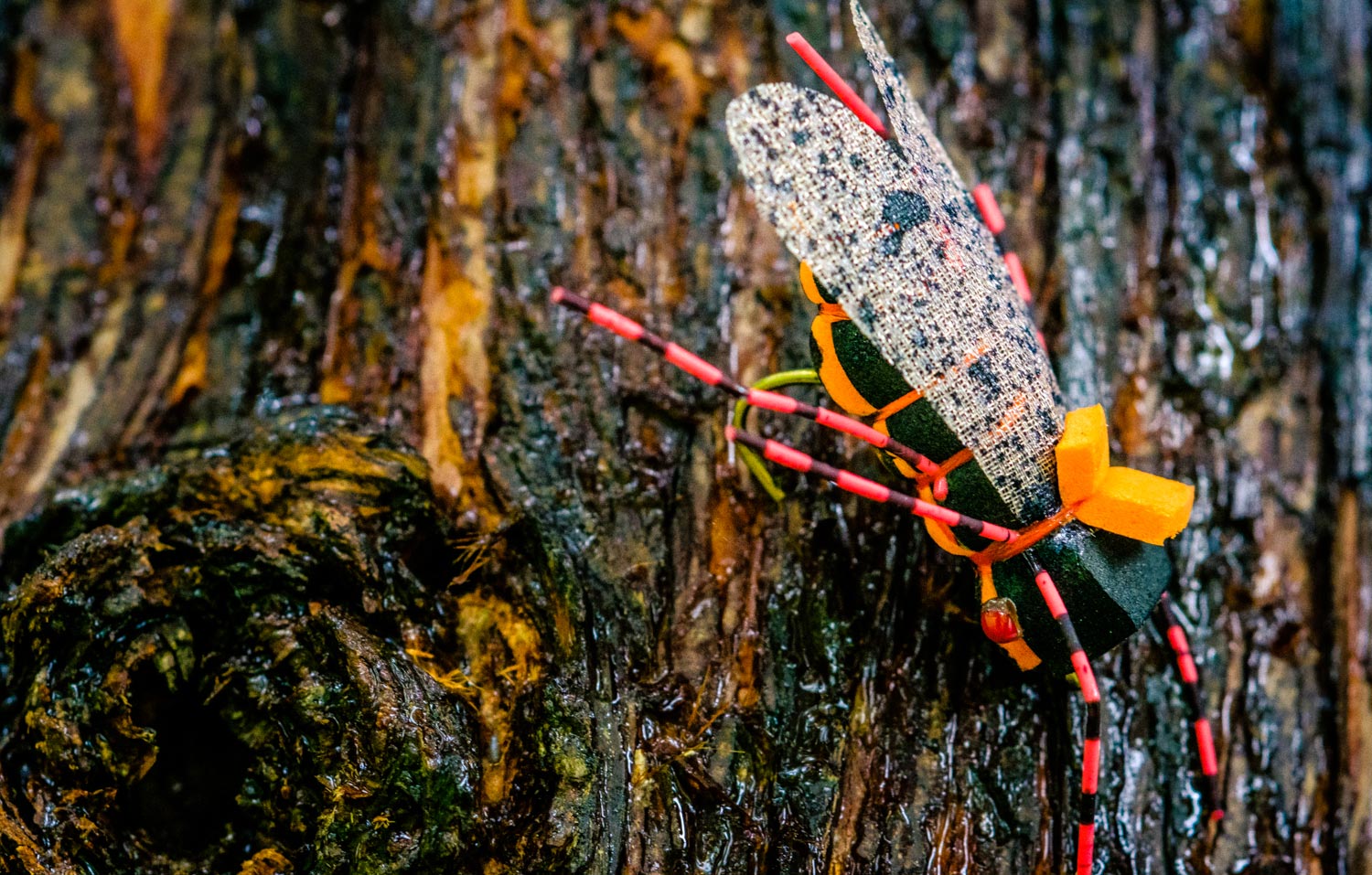
Most of the savvy local fly anglers I know are on high alert.
Fly shop phones are ringing. Fishing buddies are organized into call lists. Everyone has their ears up, listening for that buzz. Except for me, of course. I’m deaf as a post and I hear that sound all the time. It’s 2017, and it doesn’t take a math scientist to figure out what that means. Our last 17 year cicada hatch was in 2000, so it’s time to spin up some foam monsters.
Any angler who has fished a good 17 year cicada hatch is not likely to forget it. It’s the kind of experience that leaves you wondering about everything you thought you knew about fish. If you haven’t fished it, you’ve likely heard the stories. The best one I’ve heard involved huge striped bass sipping dry flies. That sort of thing will change a person.
If you’ve chased this hatch before, you probably also know about disappointment. Maybe you drove 400 miles for a hatch that never happened, or maybe you’ve seen the cicadas on the water and fish ignored them. I’ve done both, and with the chance coming only every 17 years, that’s pretty heartbreaking.
A couple of years ago, after spinning up a mound of cicada patterns for a hatch that was supposed to happen several states away, and didn’t, I got sick of waiting. I decided to fish those flies anyway, right here at home, in the absence of any hatch. Guess what?
Read More »4 Worm Patterns I Always Carry In My Fly Box
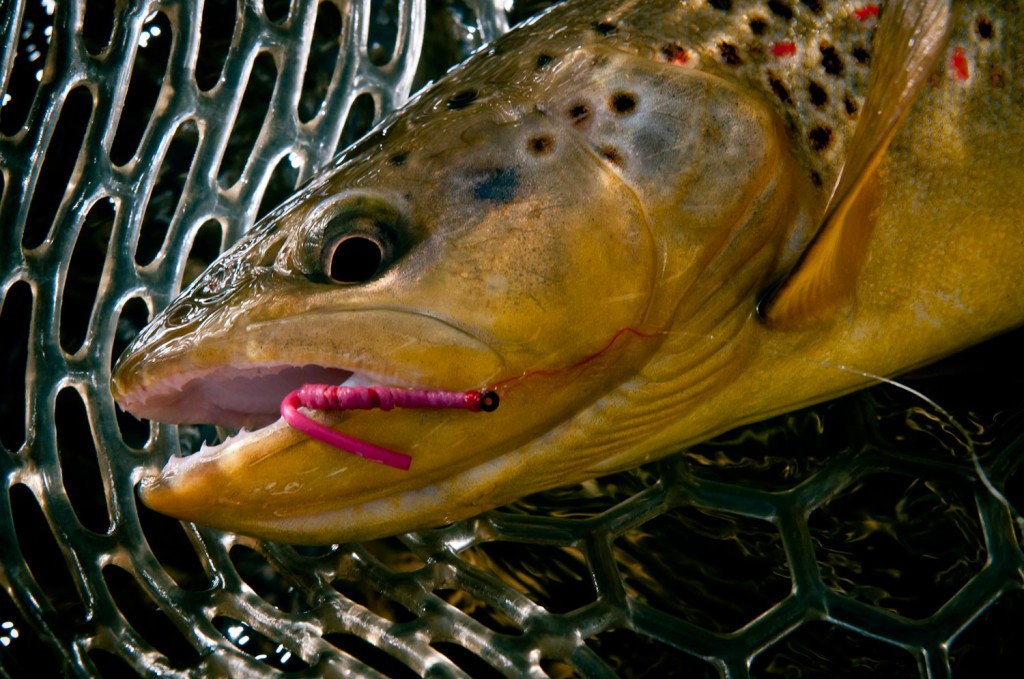
Worm Fly Patterns That Consistently Catch Fish
It’s no secret worm patterns are super consistent most of the year for catching both stocked and wild trout. They work especially well for stocked fish, after a big rain, and during the spring, winter, and fall seasons. I’ve had days when the only thing I could get trout to eat was a san juan worm. There’s a bunch of haters out there that will not fish them, claiming it’s the next closest thing to fishing a real earthworm, but look in their fly box and I bet you’ll find a few. I on the other hand, have no problem fishing worm patterns, because they do a great job of keeping my clients rods bent, which in turn, pays my bills. To top it all off, worm patterns are among the cheapest and easiest fly patterns for me to tie. I can rip out about a dozen in less than ten minutes, for about $2.50 worth of materials. Choosing to put worm patterns in your fishing line-up, will almost certainly put more fish in your net. Below are four worm patterns I always keep in my fly box.
Click on Photos For Larger Views
Fly Patterns Left to Right: Chamois Worm, Fl. Pink Flash San Juan Worm, Squirmy Wormy, Delektable Soft-Hackle Worm
The Chamois “Shammy” Worm
Yes, you read the name right, this fly is made out of a car drying chamois. For $10-14 you can buy one and tie about 100+ chamois worms with it. This pattern can be deadly after a fresh rain, when earthworms have been washed from
More Than Just A Cast
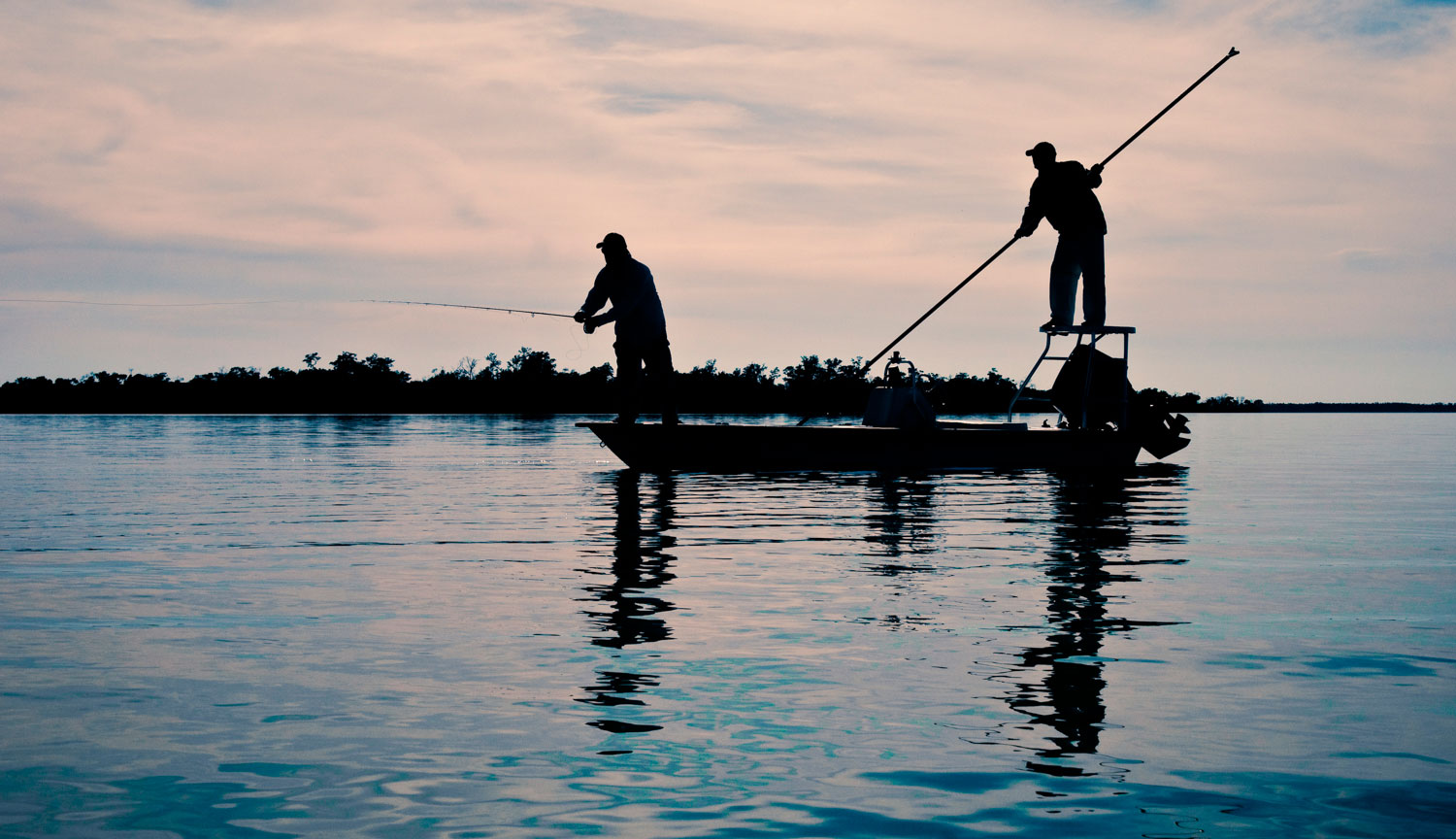
By Owen Plair
WHEN THROWING FLIES AT REDFISH, MANY PIECES OF THE PUZZLE HAVE TO COME TOGETHER TO MAKE A SUCCESSFUL DAY.
You may be able to throw a fly line 100 feet, but that doesn’t always mean you’re gonna have a killer day on the water. The most important thing when hunting redfish in the shallows is communicating with the guy on the platform. He’s not only poling you around on the skiff, but also spotting, and putting you on fish. The chemistry between the guy on the poling platform and the angler on the bow is the most important part of the day because you have to work together for the best results.
Communication is key and that’s why the bow clock was invented. If you are not familiar with the bow clock, it’s a simple idea. Picture the deck of the boat from above. Now overlay the face of a clock with noon at the very point of the bow. Nine o’clock will be ninety degrees to the left and three o’clock ninety degrees to the right. A fish located at twelve o’clock will be straight ahead of the boat and a fish at nine o’clock will be directly to the left.
If you’re new to saltwater, then you should always go over the bow clock with your guide or fishing partner before fishing. Make sure you both have the same understanding from 9 o’clock all the way to 3 o’clock and can adjust quickly while sight casting to fish.
This clock is not only good for casting direction but can also be very important for situations when spotting moving fish on the flats. I like to have my angler point his rod when I call out a clock direction. It helps us stay together and helps him see the fish. Getting the hang of the bow clock isn’t hard and will help dramatically in sight casting to fish from the skiff.
The next key factor is gauging distance. If the angler cannot see the fish, accurately judging distance is key to a good presentation. It can be hard, at first, to judge a forty foot cast compared to a sixty foot cast. When getting used to sight casting, there are visual guides that can help.
One of the best ways to judge distance is to use
Read More »Reece’s Masked Bandit
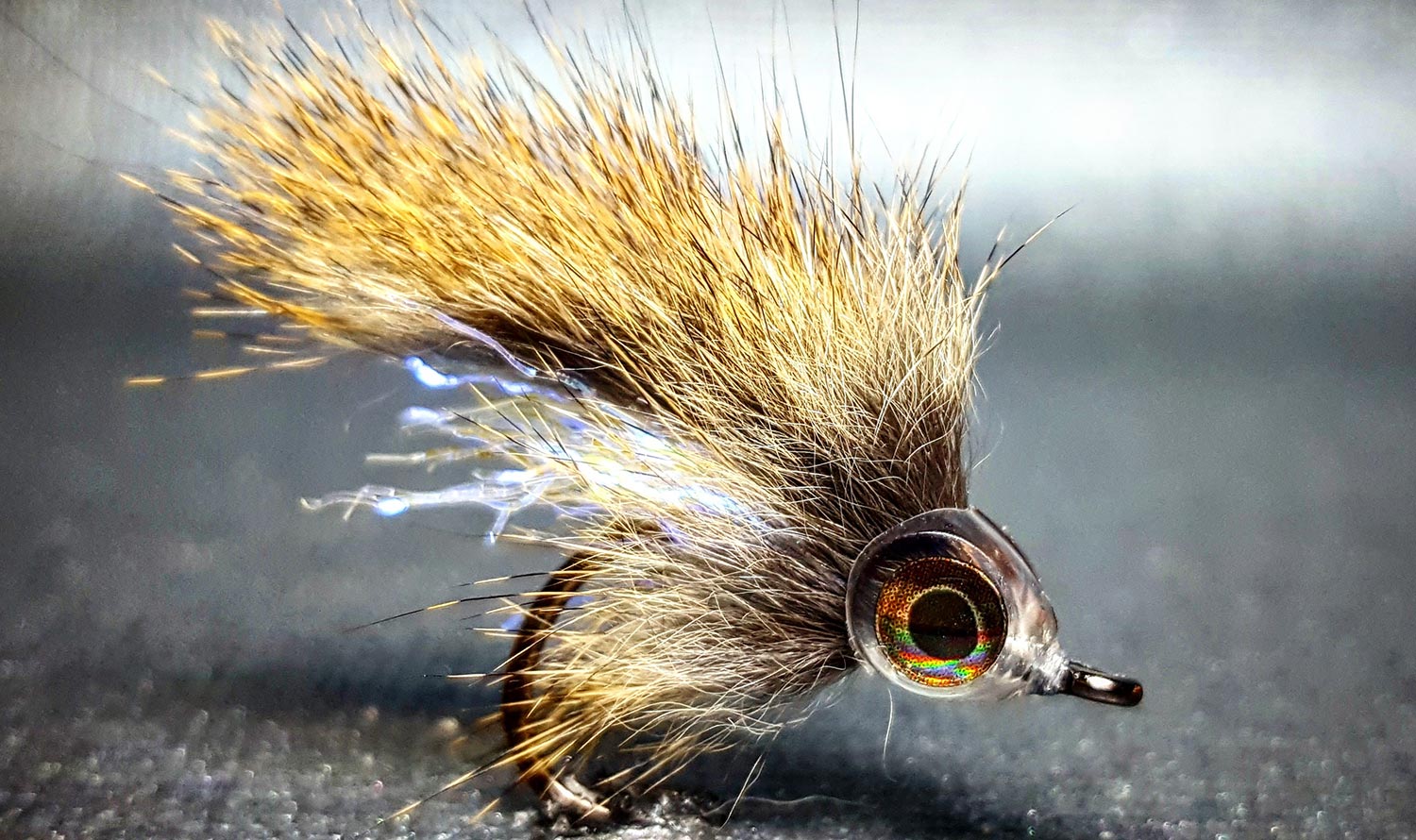
By Bob Reece
In the world of streamers, bigger is not always better.
The majority of forage fish found in flowing or still waters are quite small. I believe that to optimize the success of streamer fishing, a fly fisher must make some adjustments to their typical streamer selection.
Good foundations are essential to highly effective patterns. For this reason, I chose the Gamakatsu Octopus hook. Its combination of short shank and offset point result in an exceptional ability to penetrate and hold in the jaws of large fish. A tapered head and large eyes are perhaps the most prominent feature of the shiners, chubs, dace and other species that this fly can imitate. The Fish Mask and Living Eyes provide a perfect representation of these. They also save valuable tying time at the vise compared to creating heads with epoxies and glues. Equally as important to the effectiveness of this pattern are the pine squirrel strips. The mottled color of the fur provides an accurate imitation of scales and fins of the naturals.
I’ve never hear a fly fisher complain about catching more fish or big fish. When properly presented, the Masked Bandit will lead to both of these outcomes. While smaller than its typical streamer companions, this pattern is more than capable of producing big results.
Watch the video and learn to tie Reece’s Masked bandit.
Read More »